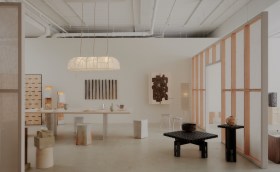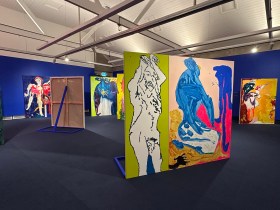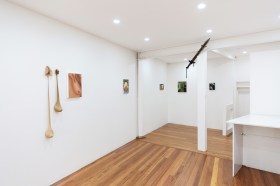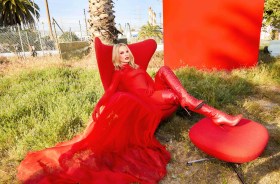In her first major Australian exhibition, US artist Zoe Leonard offers a thoughtful take on borders and migration in Al río/To the River, running at the Museum of Contemporary Art (MCA). The simplicity of what is presented (and the space in which it is presented) allows for a stunning introspection on displacement and containment, directly opposite the place where these began in Australia.
Al río/To the River is an exhibition comprising photos Leonard took along the Rio Grande – a body of water separating the US and Mexican borders. These photos are organised into specific sequences and feature a variety of subjects, backgrounds and activities, from US border force officers to arid desert landscapes, to daily life on the border. None of these photos are given context – Leonard provides no title cards for her photographs. The only guidance she provides is that the exhibit’s structure mirrors the Rio Grande, flowing “downstream” from the river’s border cities of El Paso and Ciudad Juárez to the Gulf of Mexico.
Leonard invites audiences to think about a few concepts as they view her work, such as gender, sexuality and cultural history. However, none of her photographs depict these concepts explicitly. They require a high level of observation and application on the viewer’s part, which naturally means these concepts are not always clear, but are open to interpretation (which she encourages).
However, the thread of migration is clear. Leonard goes to great lengths to establish it. Stills from a surveillance camera, multiple photographs featuring barbed wire and a mesmerising 34-picture sequence of a helicopter in motion put viewers in the position of both border force authorities and desperate refugees. Leonard’s display of these photos, which are palpably raw and authentic, lets viewers adopt these roles. We cannot always see the police or the migrants, because the photos’ purpose is to present viewers as one or the other. Sharing the feeling that we are living the daily life of these groups is the biggest strength of Leonard’s exhibition.
This feeling is compounded by the space in which Al río/To the River is exhibited. Level 3 of the MCA is eerily quiet, with bright lights and vast white walls that Leonard’s photos barely cover. This combination exudes a palpable sense of containment, of being cooped up against one’s will. Combined with a maze-like system of small corridors and big rooms that distract from the original path, a sense of displacement is soon felt. Though Leonard intended for the space to represent the Rio Grande and its many passages, audiences without this knowledge may not recognise it as such. But, in essence, the physical location of the gallery stands for much more than that – it speaks to the migrant experience in a way no photograph can. How fitting it is that Circular Quay, the place where the convicts who brought such containment and displacement to Australia first settled, is viewable from Level 3’s windows.
Read: The darkness of the image
Ultimately, Al río/To the River is profoundly engaging. Its deceptive simplicity leads to an insightful analysis of migration, with its use of space as intriguing as its visual pieces. As a result, Leonard does not just take audiences “to the river”; she invites them in to it, letting the exhibition become so much more than a set of photographs.
Zoe Leonard: Al río/To the River is on view at the Museum of Contemporary Art (MCA) from 11 August to 5 November; tickets start from $18.
This review is published under the Amplify Collective, an initiative supported by The Walkley Foundation and made possible through funding from the Meta Australian News Fund.






